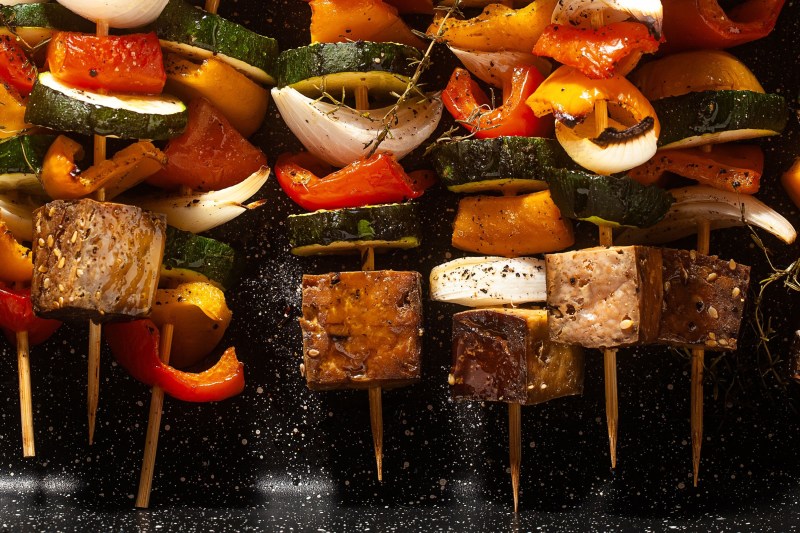
Spring is here, and summer is fast approaching, and that means it is time to grill! Most people are familiar with grilling and the specific flavor that food cooked on a grill picks up. That one-of-a-kind flavor comes from the smoke that the grill puts out, and while many are familiar with how delicious smoked meats are, this is where the familiarity stops. Smoking vegetables sounds like way more work than it’s worth, right? Wrong — smoked vegetables at home are not that tough, and the smoke imparts flavor on your vegetables that can’t be duplicated otherwise.
If you’re a seasoned smoke pit operator, this may not be news to you, but even some meat-smoking aficionados won’t mess with vegetables. Whether you know your way around a smoker or not, keep reading to find out how to smoke vegetables and bring an unexpected flavor to your next cookout.
A bit about smoking

Smoking as a cooking method is one of the oldest ways to cook and preserve meats. Everyone (except vegetarians and vegans) knows that smoked meats are delicious. An ordinary beef roast slow-cooked in a smoker all day transforms into a juicy brisket that can be sliced, diced, eaten on a sandwich, or even eaten right off the cutting board. Most people encounter these types of smoked meats at barbeque restaurants, and some are lucky enough to experience smoked meats at family functions or as part of an annual celebration.
The process of smoking foods begins to get complicated here, but don’t worry — this is more about information than real-life application for now. When smoking meats, the goal is to cook the meat and infuse it with a smoky flavor, so meats smoke for a long time. To create smoke but not fire, the temperature must remain low throughout the cooking process.
Meats have the density and fat content necessary to withstand this low-and-slow cooking and become more tender as the process finishes. But can you smoke vegetables? Yes! But smoking vegetables comes down to flavor more than actually cooking the veggie, and you don’t want to destroy the flavor or texture of the veggie completely.
Smoking vegetables 101

The goal here is flavor, and you will be pleasantly surprised when you try out some of these ideas, we promise. Veggies like tomatoes and carrots can stand up to longer smoke times than, say, summer squash or mushrooms, which may quickly taste more like charcoal than vegetables. So, it’s essential to consider the heartiness of the vegetable before you smoke. It’s best if you also stick to milder wood chips such as apple, oak, or maple. Mesquite, for example, will likely overpower your flavors.
Step 1
Sprinkle the wood chips (soaked if they are large) in the bottom of your smoker and place a drip tray that’s smaller in perimeter on top of the primary pan. You can use items you probably have on hand if you don’t have a pan — a double layer of aluminum foil or a small pie pan will work just fine. Above that, place a rack or broiling pan (the kind with holes in it) for the food to sit on. Seal the food under a lid or some tin foil and place the whole contraption over a heat source. The heat will ignite the chips, which will start to smoke, and you will set a kitchen timer. If you have a smoker, you won’t need to set one up as instructed above. The process will be similar to that of smoking meats, only it goes way quicker.
Step 2
We recommend you do all smoking outdoors for safety reasons. Also, there really is no step two. Once you put the veggies in the smoker and put a lid on it, you’re done. We have some general guidelines for cooking time for the veggies we love below, but other than that, smoking anything is a lot of trial and error. You will quickly learn which veggies can take a lot of smoke and which can’t. You’ll also begin to understand how long each veggie needs in the smoker. You’ll get better with practice; trust us. And what better way to use up all of the vegetables your patio garden produces?
Veggie smoking ideas

Here are some helpful tips on how to prepare your vegetables for a smoking session:
- Trim off the top of the garlic head as you would if you were roasting it in the oven and rub it all over with olive oil. Smoke over low heat until the cloves are tender. When finished, use the garlic cloves for dressings or marinades, add it to hummus, or mince and serve with bread and high-quality olive oil and herbs — the possibilities are endless.
- Summer squash and zucchini are pretty bland and have a high water content, so many people don’t like them. However, smoked squash ribbons make for a surprising texture and flavor in your next salad. They go quick, and after about 4 minutes, the smoke dries them out a bit, which is a good thing.
- Mushrooms tossed with a bit of olive oil and smoked for about 15 minutes which will be enough to give them a smoky flavor. If the mushrooms aren’t cooked enough after 15 minutes, put them in a 350-degree oven or a skillet to finish, as much longer in the smoker will overwhelm the mushroom flavor with smoke.
The best veggies to smoke
Now that we’ve given you some tips above on prepping some vegetables for smoking, here are ideas on veggies to smoke, as many vegetables take well to the smoky flavor.
Hearty vegetables, such as sweet potatoes, russet potatoes, and even fingerling potatoes all develop a delicious caramelized sweetness when smoked. Root vegetables like carrots, beets, and parsnips get a deeper, earthier flavor with a hint of smoke. Onions are perfect, whether whole or sliced. Smoked corn on the cob is a classic for outdoor eating, with the smoky flavor complementing the natural sweetness of the corn.
Lots of mushrooms — portobello, cremini, and even button mushrooms become even more savory and flavorful when smoked. Red, yellow, and orange bell peppers add a pop of color and smoky sweetness. Your cruciferous vegetables, like broccoli and cauliflower, actually develop a slightly nutty flavor with a hint of smoke. Lastly, string beans take well to smoking, becoming tender and smoky.
Summer is so close that you can smell the barbecue in the air. If you have a smoker and are looking for a new muse, get smoking. You will be pleasantly surprised by the flavors you experience. If you’re new to the smoking world, you’ll be experimenting a bit anyway, so throw some veggies on for good measure.



